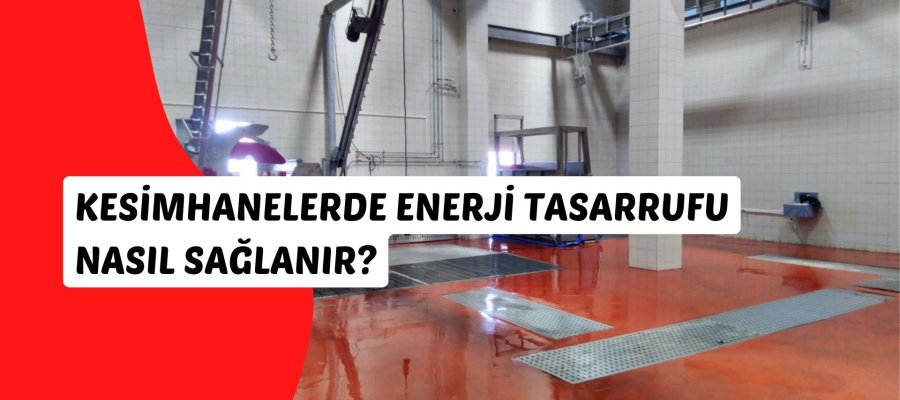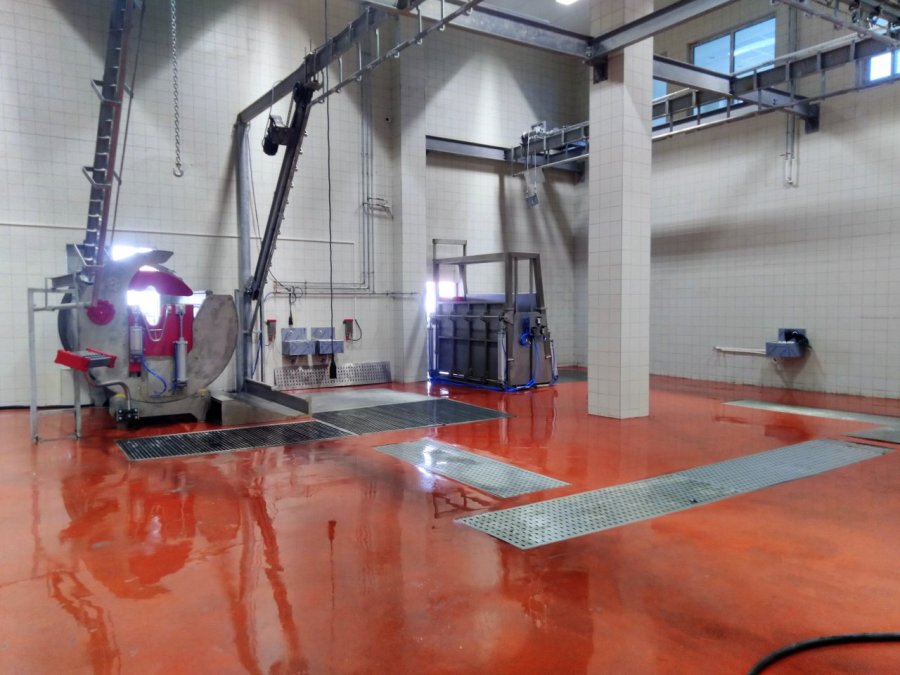
How to Save Energy in Slaughterhouses
Discover practical strategies to save energy in slaughterhouses, reduce costs, and boost sustainability with modern, efficient solutions.
11 September, 13:09
Energy efficiency in slaughterhouses is a critical aspect of modern meat processing operations. Not only does saving energy reduce operational costs, but it also supports sustainable practices, helping the industry lower its environmental impact. Implementing smart strategies and technologies can significantly enhance energy efficiency while maintaining high standards of hygiene, safety, and animal welfare.
Understanding Energy Consumption in Slaughterhouses
Understanding energy consumption in slaughterhouses is crucial for improving efficiency and reducing costs. These facilities are energy-intensive due to multiple processes, including refrigeration, lighting, water heating, machinery operation, and ventilation. Among these, refrigeration and cold storage often account for the largest portion of energy consumption, highlighting the need for effective energy management strategies.
Furthermore, factors such as inefficient equipment, poor maintenance, and outdated infrastructure can lead to excessive energy use. This not only increases operational costs but also contributes to higher carbon emissions. Implementing energy-efficient technologies and regular maintenance schedules can help mitigate these challenges. Ultimately, understanding and optimizing energy consumption in slaughterhouses is essential for both economic and environmental sustainability.
Key Strategies for Saving Energy

Invest in Energy-Efficient Equipment
Investing in energy-efficient equipment is crucial for modern slaughterhouses seeking to enhance operational efficiency and sustainability. Modern slaughterhouses can benefit greatly from energy-efficient machinery and refrigeration systems, which not only decrease energy consumption but also lower operational costs.
Furthermore, the integration of automated systems that adjust operation based on real-time demand plays a vital role in achieving substantial energy savings. These systems optimize the use of resources, allowing slaughterhouses to respond dynamically to fluctuating workloads while minimizing wastage.
Optimize Refrigeration and Cold Storage
Maintaining the correct temperature is vital for food safety, but excessive cooling wastes energy. To strike a balance between safety and efficiency, businesses should invest in insulated storage areas that keep the cold air contained, reducing the workload on refrigeration systems. Additionally, utilizing energy-efficient compressors can significantly lower energy consumption while still keeping products at the necessary temperature. Implementing smart temperature monitoring systems allows for real-time tracking of conditions within storage units. These systems can alert managers to any fluctuations, enabling immediate action to rectify issues before they compromise food safety. Regular maintenance of refrigeration units is crucial to this process, as it prevents leaks and inefficiencies that can lead to energy waste and temperature fluctuations.
Implement Smart Lighting Solutions
Replacing traditional lighting with LED fixtures and integrating motion sensors can significantly reduce electricity use. By making this transition, businesses can lower their energy bills while also contributing to environmental sustainability. LED fixtures consume less power and have a longer lifespan than conventional bulbs, leading to less frequent replacements and reduced waste. Moreover, properly designed lighting systems not only save energy but also improve visibility and safety for employees.
Enhanced illumination in workspaces helps reduce the likelihood of accidents and increases productivity. With the strategic placement of motion sensors, lights can automatically adjust based on occupancy, ensuring that areas are only lit when necessary. Implementing smart lighting solutions is a cost-effective strategy for modern workplaces looking to optimize their energy use while fostering a safer and more efficient environment.

Adopt Renewable Energy Sources
Adopting renewable energy sources is a crucial step for slaughterhouses aiming to enhance operational efficiency while promoting sustainability. Solar panels, along with wind energy and other renewable sources, can offset a significant portion of a slaughterhouse’s energy requirements. By harnessing the power of the sun and wind, these facilities can reduce their reliance on fossil fuels, ultimately leading to lower energy costs. In addition to reducing costs, renewable energy adoption demonstrates environmental responsibility and sustainability to clients and stakeholders. A commitment to solar panels and wind energy not only helps in minimizing carbon footprints but also enhances the brand image of the business.
Enhance Water Heating and Usage Efficiency
Water heating is another major energy consumer in slaughterhouses, especially for cleaning and sanitation. The demand for hot water can lead to significant energy consumption, making it crucial to implement strategies that enhance efficiency. One effective measure is the installation of on-demand water heaters, which heat water only when needed, reducing the energy wasted during storage and standby modes.
Additionally, insulating pipelines ensures that hot water retains its temperature as it travels through the system, minimizing heat loss. This practice not only conserves energy but also enhances the overall effectiveness of sanitation processes. Moreover, reusing water where possible can significantly reduce the volume of heated water required, leading to further energy savings.
Monitor and Optimize Energy Consumption
Energy monitoring systems allow facility managers to track consumption in real-time, providing a comprehensive view of energy usage across various operations. Data-driven insights help identify inefficient areas, enabling targeted improvements and continuous energy management. With real-time data at their fingertips, facility managers can swiftly address issues, optimize equipment performance, and reduce wasteful practices.
Moreover, routine energy audits are essential to maintaining long-term efficiency. These audits systematically assess energy consumption and pinpoint opportunities for enhancement. By regularly evaluating energy performance, organizations can adapt to evolving standards and technologies, ensuring sustainable practices are embedded in their operations.
Employee Training and Awareness
Staff behavior plays a key role in energy conservation. Training employees on energy-saving practices, such as shutting down unused machinery and optimizing workflow, can lead to substantial savings without compromising productivity.
See also: slaughter machine